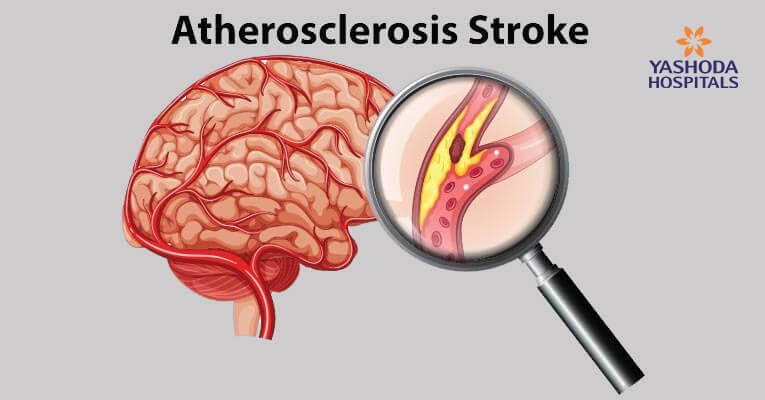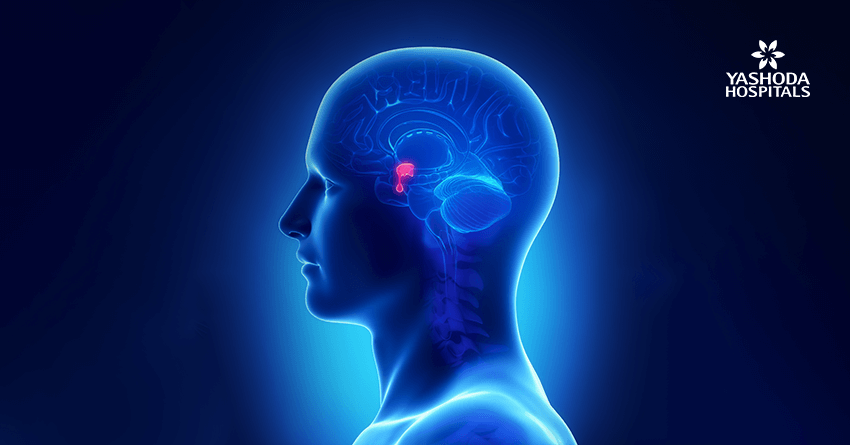Intraoperative ICG Video Angiography in the Management of Intracranial Aneurysm Surgery
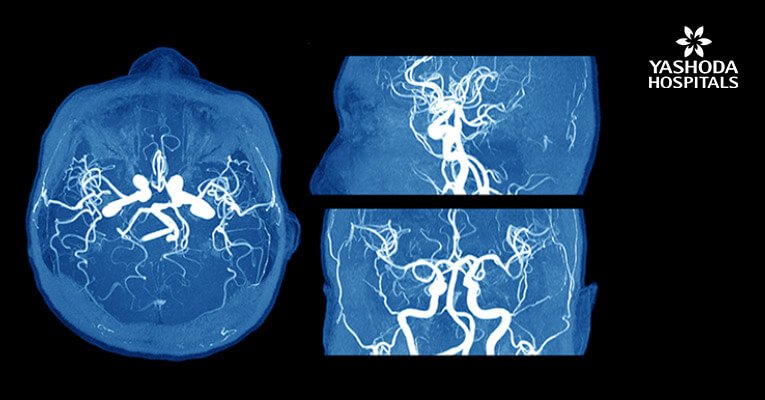
Introduction
The purpose in the surgical clipping of the Intracranial Aneurysm is to completely occlude the lumen of the Aneurysm and maintain the patency of the parent, branching and perforating arteries. However, vascular occlusion of either parent, branching or perforating arteries due to improper clip placement during Intracranial Aneurysm Surgery is still fairly frequent. Postoperative Angiograms in several studies have revealed an incidence of vascular occlusion between 4 and 12%, residual aneurysm filling between 2 and 8%. Indocyanine Green Angiography (ICG) has been used in recent years. Raabe et al. reported their initial experience with ICG Angiography in Intracranial Aneurysm Surgery. We present the experience of our cases to assess the clinical value of Intraoperative ICG Angiography in verifying the vascular patency and residual aneurysms.
Materials and Methods
- Weoperated a total of eight Five were males and three were females.
- FourACOM Aneurysms, two PCOM Aneurysms, two MCA Bifurcation
- Herewe will be discussing the usefulness and how to use ICG dye while clipping
Procedures
In addition to our standard protocol for Intracranial Aneurysm Surgery, a history of iodine allergy, pregnancy, previous anaphylactic reactions to contrast media or dye injection was acquired either from the patients or their relatives depending on the clinical condition, and written informed consent was obtained. The surgical procedure was performed as usual. Intraoperatively, the choice of ICG Angiography was mainly based on the surgeon’s decision. For small and simple aneurysms, ICG Angiography was routinely performed after clipping. If any abnormal finding was noted, the procedure was repeated after 15 minutes. The routine dose for ICG Cerebral Angiography was 0.2-0.5mg/kg up to a maximum dose of 5mg/kg.
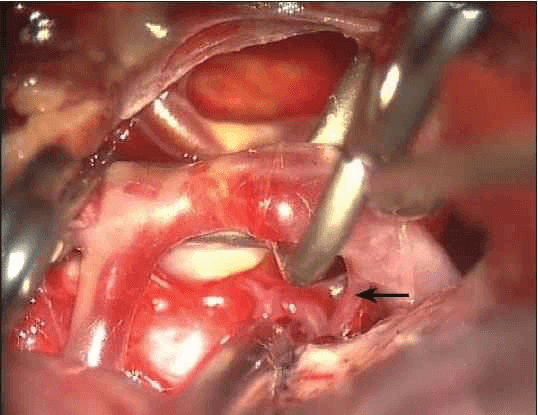
Fenestrated Clip Placement
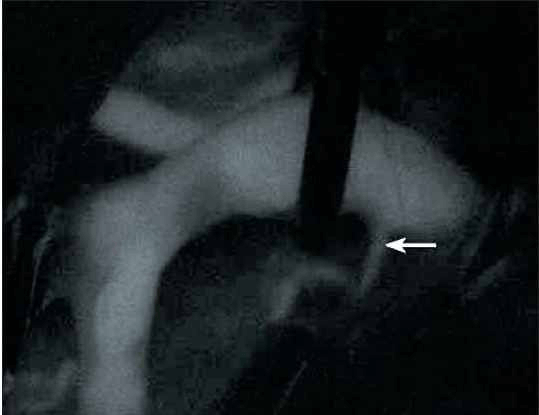
Good Flow With Perforator Preservation
Principles and Technique of Indocyanine Green Angiography Video Angiography
The ICG-integrated microscope (Carl Zeiss, Pentero 900) was introduced to our institution in 2014. ICG is a near- infrared fluorescent tricarbocyanine dye, which is widely used in Ophthalmology for assessment of retinal microcirculation. The absorption and emission peaks of ICG dye (805nm and 835nm, respectively) lie within the optical window of tissue in which absorption, attributable to endogenous chromophores is low. After the ICG has been injected intravenously, ICG is bound to globulins (a1- lipoproteins) within one to two seconds. ICG is not metabolized in the body, and it is eliminated almost completely in the liver. The plasma half- time is three minutes. The routine recommended dose for cerebral angiography is 0.2-0.5mg/kg, the maximum daily dose should not exceed 5mg/kg. The operative field is illuminated by a light source that has a wavelength covering part of the ICG absorption band. The ICG dye is injected as a bolus (standard dose of 25mg dissolved in 5ml water). The ICG-induced fluorescence signal is captured and recorded by the video camera integrated into the microscope. About 7- 8 seconds following intravenous ICG injection, the arteries begin to fill, followed by the small arteries, cortical veins. The time course of ICG angiography could be divided into arterial, capillary and venous phase as observed in DSA angiography. Approximately 1-2 minutes later, the intensity of ICG is gradually decreased. The time allows the surgeon to assess and adjust the clip. The image is stored in the video camera and can be reviewed repeatedly.
Discussion
The most serious complications of intracranial aneurysm surgery are related to improper clip placement. Improper clip placement has been associated with compromised blood flow, and in a large number of cases, with subsequent development of delayed neurological deficit, stroke, and even death.[3] MacDonald et al. reported that 11.5% of their cases had compromised blood flow due to accidental vessel stenosis and 10.3% eventually suffered a serious stroke or death. [6] Alexander et al. found that approximately 12% of cases with intracranial aneurysm clipping were associated with unexpected residual aneurysm, and unexpected major arterial occlusion. [1] Despite great attempts to preserve the patency of the important vessels, intraoperative visual inspection is still not sufficient to reveal arterial compromise or occlusion with subsequent high occurrence rate of postoperative complications. Intraoperative vascular imaging is very valuable and could be effective in decreasing the morbidity of intracranial aneurysm surgery.
Various detecting methods, such as intraoperative microvascular Doppler ultrasonography and intraoperative DSA could provide valuable information about the parent or branching vessels’ occlusion, residual aneurysm. Intraoperative angiography is the gold standard for the assessment of complete aneurysm clipping and vessel patency. Several studies have showed that intraoperative DSA reveals a significant number of cases of unexpected stenosis or occlusion, residual aneurysm filling. However, it is expensive, time-consuming, technically demanding, requires major logistical support and is still associated with a complication rate of 0.4-2.6%. The most important drawback of DSA is the ability to assess the patency of small perforating arteries.
ICG Angiography has been widely used in Ophthalmology for assessment of Retinal Microcirculation for more than 30 years, the complication rate is less than 0.1%. It is being used in recent years for Cerebrovascular Angiogram. This method is simple and quick, offering real-time information on the patency of arterial and venous vessels of all relevant diameters, including vessels of diameter less than 1mm that are visible and not covered by clots or brain tissue. The ICG angiography integrated into the surgical microscope has considerably improved the simplicity and speed of the procedure. The procedure can be repeated after 15 minutes. There is no need to remove the microscope from the surgical field or interrupt the operative manipulation. The available time of ICG Angiography is two minutes, the time frame allows the surgeon to act immediately to adjust the clip before the occlusion occurs. ICG Angiography is most helpful in dealing with small vessels which are kinked or bent.
The main limitation of ICG Angiography is that the views are restricted to the field of the microscope. Vessels covered by blood clots, brain tissue or clip cannot be observed. When residual aneurysm neck is covered by parent artery or clips, the possibilities of residual aneurysm cannot be excluded. However, incomplete occlusion can be clearly diagnosed by the slow contrast filling. The assessment requires more angiographic views to identify the situation. [ 5] Slight retraction of brain tissue or arteries may help the exposure of aneurysm neck or small arteries. The image of ICG Angiography may be affected by calcifications and thick- walled atherosclerotic vessels or by partially or completely thrombosed aneurysms. The signal may be poor and the possibility of vascular stenosis cannot be excluded. For such cases, intraoperative DSA remains the modality of choice.
While operating we had adjusted clip placement in three of the cases as we could see partial blockage of the distal vessels, which definitely prevented the postoperative morbidity.
Conclusion
Indocyanine Green Angiography with high time and spatial resolution is a simple, reliable and cost-effective method. It provides real-time information in detecting the patency of parent, branching and perforating arteries. It can help to improve the quality and outcomes of surgical procedures. The method can be used routinely or as an adjunct to other methods. In patients with large or giant, wide-neck aneurysms or with thick-walled atherosclerotic vessels, the ICG Angiography may be unreliable. In such cases, ICG An giography combined with Intraoperative DSA, Microvascular Doppler Ultrasound and Electrophysiological Monitoring may further improve the outcomes of Intracranial Aneurysm Surgery.
References
- AlexanderTD, Macdonald RL, Weir B, Kowalczuk, Andrew BA. Intraoperative angiography in cerebral aneurysm surgerym: A prospective study of 100 craniotomies. Neurosurgery 1996;39:10-8.
- ChiangVL, Gailloud P, Murphy KJ, Rigamonti D, Tamargo Routine intra-operative angiography during aneurysm surgery. J Neurosurg 2002;96:988-92.
- RaabeA, Nakaji P, Beck J, Kim LJ, Hsu FP, Kamerman JD, et al. Prospective evaluation of surgical microscope- integrated intraoperative near-infra-red indocyanine green videoangiography during aneurysm surgery. J Neurosurg 2005;103:982-9. aneurysm J Neurosurg 2005;103:982-9.
- RaabeA, Beck J, Gerlach R, Zimmermann M, Seifert Nearinfrared indocyanine green video angiography: A new method for intraop-erative assessment of vascular flow. Neurosurgery 2003;52:132-9.
- RaabeA, Beck J, Seifert Technique and image quality of intraoperative indocyanine green angiography during aneurysm surgery using surgical microscope integrated near-infrared video technology. Zentralbl Neurochir 2005;66:1-6. [PUBMED] [FULLTEXT]
- MacDonald RL, Wallace MC, Kestle JR. Role of angiography following aneurysm surgery. J Neurosurgery 1993;79:826-32.
About Author –
Dr. Venugopal G, Consultant Neurosurgeon, Yashoda Hospitals, Hyderabad
M.Ch (Nero Surgery)
His expertise includes spinal and cerebral tumor embolization, brain aneurysm coiling, foot drop; miss, petrosal sinus sampling, functional neurosurgery epilepsy surgery, carotid body tumor embolization, brain dural arteriovenous fistula embolization, head & neck tumor embolization, carotid cavernous fistula treatment & brain arteriovenous fistula embolization.










